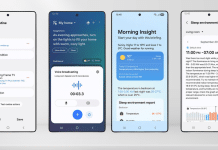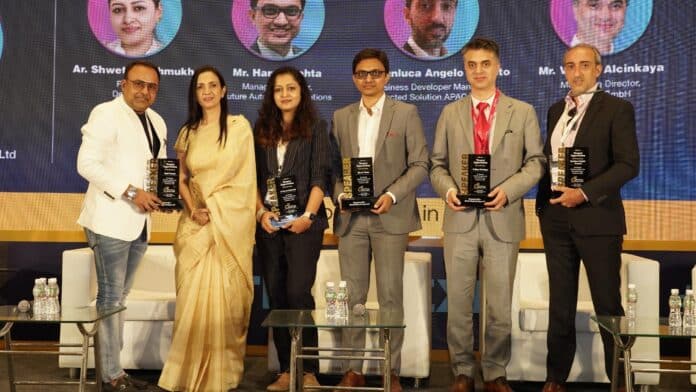
There is a high demand for intelligent home-connected devices in the residential segment. Every year, technologically upgraded solutions are launched by various brands that claim to provide a state-of-the-art experience. Plus, these smart home solutions are using AI and other advanced data tools to try and create a more cohesive experience for their clients.
Smart Home Expo 2022 created this perfect platform for professionals, manufacturers, system integrators, and retailers to discuss the finer details and challenges of how they could work in coordination with each other to bring a unified experience to the segment of smart home.
The question remains, ‘How to bring a unified experience to smart homes?‘ The Smart Home Expo 2022 brought this up as a subject, among others, as a part of the panel discussions held during the course of the two-day event.
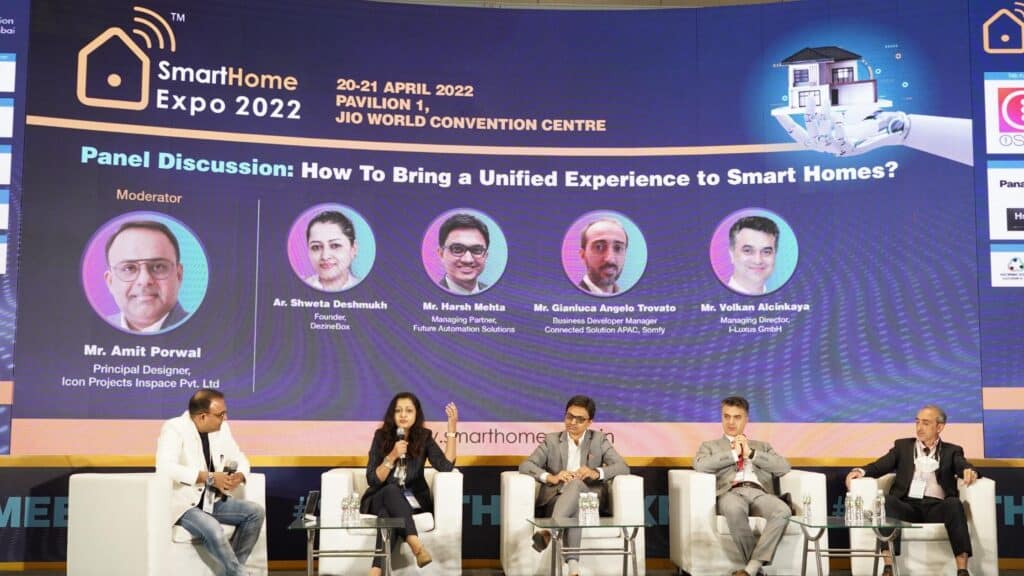
The eminent panel included renowned interior designer Amit Porwal, the Principal Designer at Icon Projects Inspace Pvt. Ltd. as the Moderator who was joined by other panelists Ar. Shweta Deshmukh, Founder of DezineBox; Mr. Harsh Mehta, Managing Partner at Future Automation Solutions, Mr. Gianluca Trovato, Business Development Manager, Connected Solutions, Somfy and Mr. Volkan Alcinkaya Managing Director, i-Luxus GmbH.
Mr. Porwal initiated the discussion by giving a brief introduction and asked the panelist, What do you think about integrating Smart Home Solution in your projects and What does the future hold?”
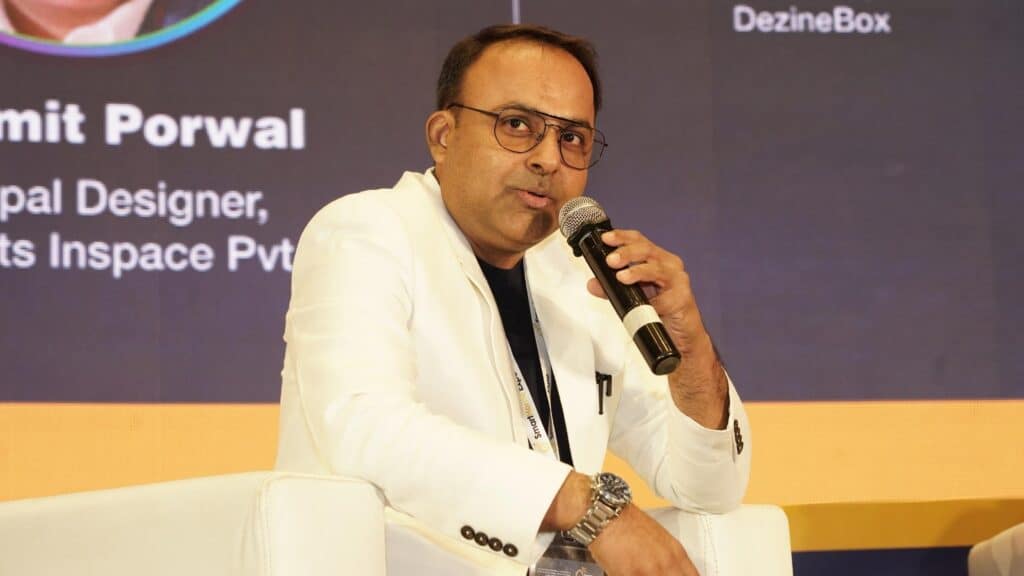
It was aptly answered by Ar. Deshmukh, “Smart automation is no longer considered as `Luxury’. In fact, they are the need of the hour! It is the responsibility of architects and interior designers to educate, encourage and convince our clients on how important it is to integrate automation in the projects.”
“My approach towards educating my clients is I broadly divide the entire section into three segments: security, lighting and entertainment. Another important aspect is sustainability, so all these factors security, comfort, and ambience are encompassed by sustainability. Today, it is very important for us to reduce the carbon footprint and wellness is also added.” continued Ar. Deshmukh.
“Now wellness is an extra added factor to automation, which is simply superb. We wear smartwatches and control a lot of functions etc. So this is again an added value to automation.” she concluded.
Adding his insight on the same topic, Mr. Gianluca Trovato, a representative of Somfy said,” We are specialists in the solar shading and home automation solution.” Trovato continued “It is my duty to drive the home automation for our company in this area and to pick up the concept, for me, home automation is comfort for sure. Although it’s not yet for everybody and is not the answer to all needs, it does make life easier.”
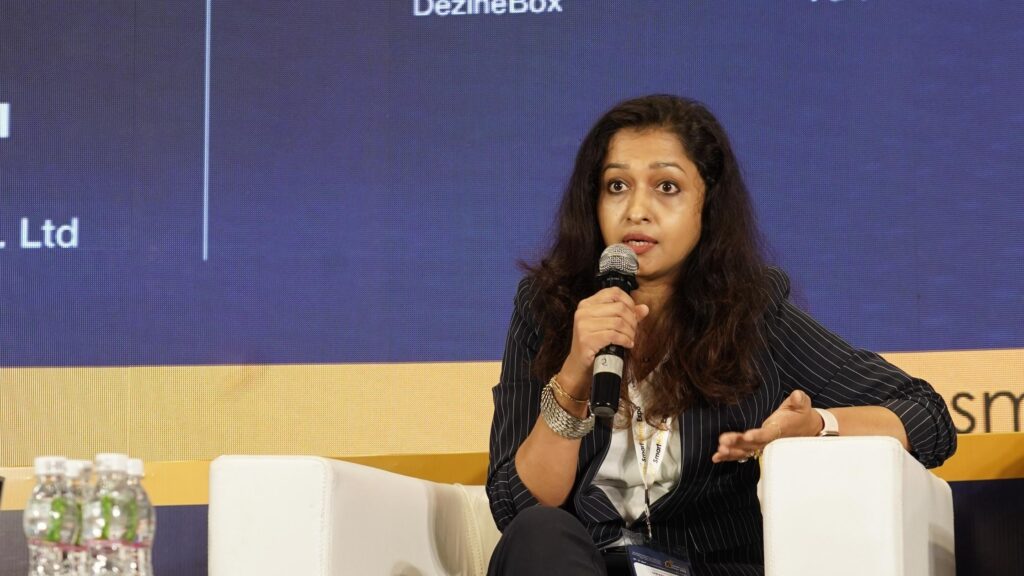
While Mr. Volkan Alcinkaya, Managing Director of i-Luxus GmbH joined in by saying that although we have progressed with the concept of smart homes and artificial intelligence in residences in comparison to smartphones, home automation will follow a similar trajectory. He continued “What drives you to do something is the aspiration to do it and own it. It is the same with smart home solutions. Firstly, we have to adopt such technologies to have a sustainable world and to save energy. The second thing is to provide us comfort and wellbeing.”
He concluded by agreeing with Mr. Trovato, that while many people cannot afford home automation, a solution can be achieved within the smart home business, interior designer and a system integrator, until then there will always be those who want to opt for a smart home.
Being an excellent moderator, Mr. Porwal raised another question to the panelist ”How do you both lay a foundation for a client? Or how do you lay a foundation with the constant evolution of smart technology? How do you both try to balance that into a project, which you’re going to start?
Mr. Harsh Mehta, Managing Partner at Future Automation Solutions, took this opportunity to brief the audience about his company by saying, “We are a system integration-based company from Ahmedabad and we are the early adopters of KNX and smart home technology. And ever since then, we have done more than 400 projects across the various segment.”
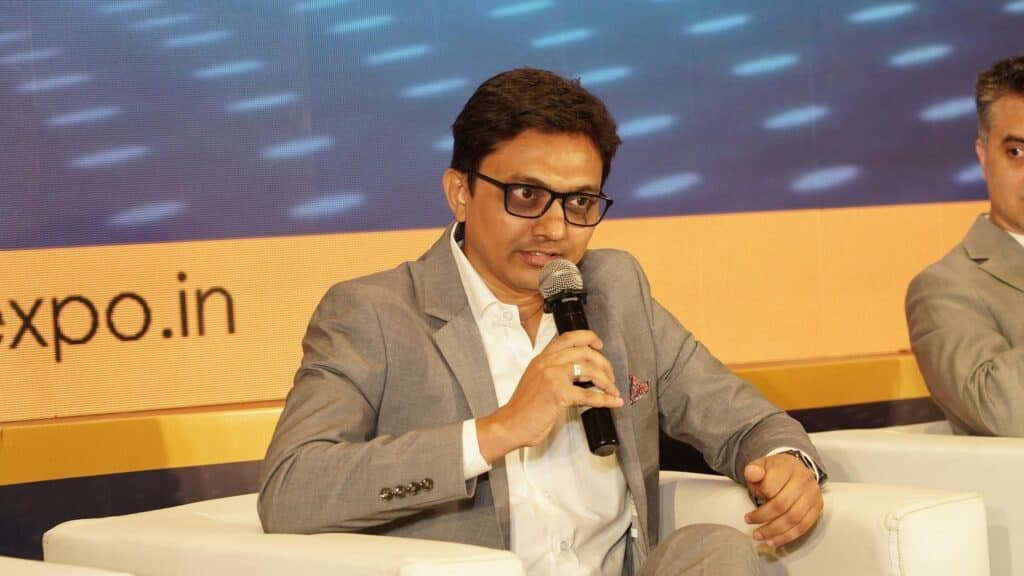
Mr. Mehta went on to address the audience’s question and explained, “My take on this would be that automation technology has been an evolution. So, it was not a technology that existed the way it is today. It has evolved over the years. When we meet clients, our aim is to educate them about what are the current solutions available, but more importantly to solve their doubts and queries.”
He further narrators a beautiful example of a tech-friendly client project, with a big house. “The client’s daughter prefers sleeping at a 16 degrees temperature every night, the challenge for my client was having different temperatures for different rooms. This was easily achieved with home automation, by giving access to all the temperature control settings to the client in his room.”
“So every day we encounter clients with different challenges, whether my daughter is safe at home, whether my AC is turned on or not, whether I left my geyser open on etc. all this can be seamlessly managed with automation systems. That’s where we evolved, and that’s where we try to educate our clients,” added Mr. Mehta
Ar. Shewta Deskhum, gladly shared an experience from her college days with a book titled, Future Shock by Alvin Toffler. She went on to explain how at the time she did not relate to it, as personal technology such as mobile phones were just introduced to the world, but in today’s age, she can see technological evolution happening at a faster pace than ever before, turning the words by author Toffler true.
Mr. Porwal continued the discussion by diverting the attention to Mr. Trovato, Somfy, who had more to say on how home automation should be pitched to clients.
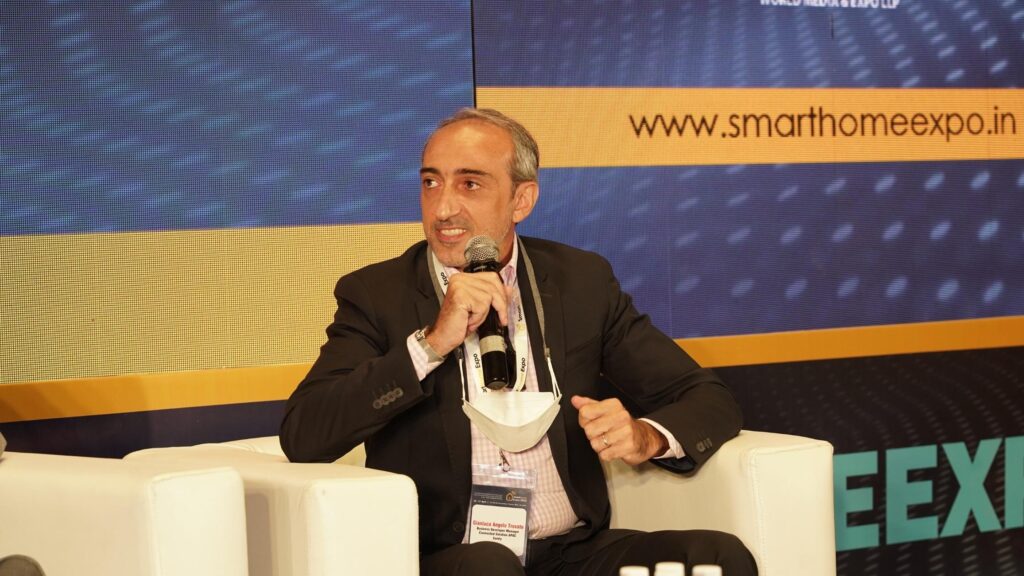
“We need to leverage on the benefit, or we are asking people to spend a little bit more money. Because this is how things are. So, what is the benefit to them? So, for me, the first step is to listen carefully to what they want and need, and then connect what they desire and need. So, what products can we provide to meet their need? As a result, we’ll have to work on it. So, if there is a need for security, then one should only discuss that aspect, do not give an overload of information because a lot of people buy home automation and then are dissatisfied because they bought things they didn’t need.” said Mr. Trovato.
After the panel agreed with Mr. Trovato’s answer, the moderator, Mr. Amit Porwal, placed the question of the hour in front of them.
“I believe it’s common for all of us and which I believe is a very important question in terms of understanding that there is a constant evolution of technology. How do we arrive at something which is called a unifying standard?” questioned Mr. Porwal.
Mr. Volkan Alcinkaya, the Managing Director of i-Luxus GmbH, was quick to answer,” Firstly, Why do we have to get unified? Let’s make it clear that a smart home means different controls. For example, automation for lighting, AC shutter and blind security, CCTV alarm, and solar system consumption. They need to work in a circle smart way, and they coordinate and are interlinked with each smart feature. All the systems have their own protocol, but they are some with common protocols.
Explaining the different integrations to the audience he further adds, “For example, think about a smart villa at the door, you have the doors, unit door and phone unit. When the doorbell rings, you are receiving the video. They are not from the same manufacturer, but this protocol is from the door. The phone is SIP or VoIP. And the door panel is KNX. But these systems are integrated into each other to perform a specific function.” said Mr. Alcinkaya
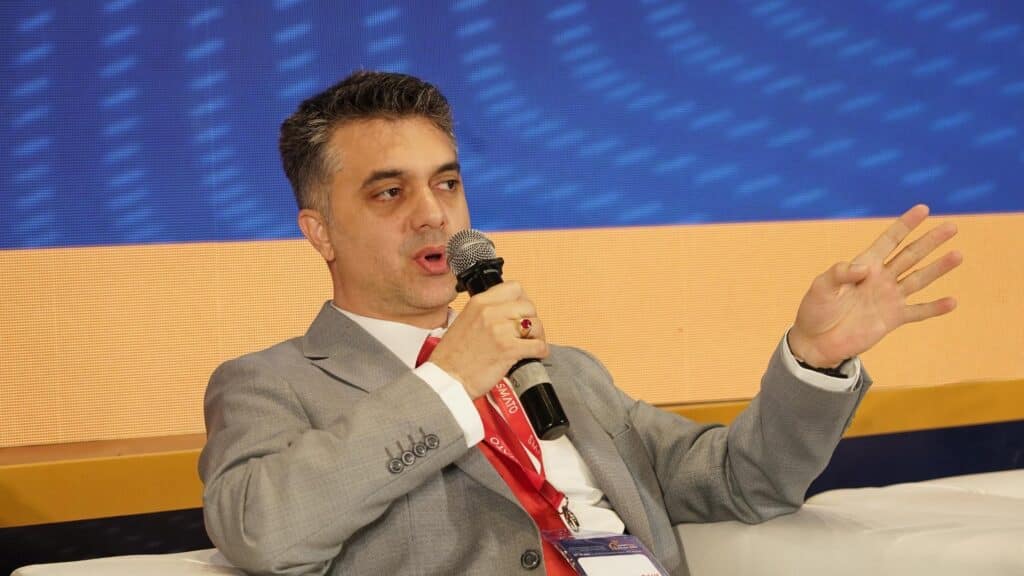
Speaking about the latest development in this segment he said, “IoT, for example, has its own protocols, such as MQTT and others. But it’s also quite easy for us as a manufacturer to start working on the integration as soon as we hear this. We’re also offering shorter gateways than the system requires. The only thing is that I’d like to say a few words about the system integrator and designer with whom I worked closely. Can I remark, for instance, that this is a new technology and that people should be aware of it? The most significant task, in fact, is on the manufacturer’s side. You must complete the training. We provide training, assist with design, and work with the system integrator and designer.” he concluded.
Mr.Mehta further added,” So I think most of the people out there must have either used or designed a home theater. It’s a very common sight to see multiple remotes on a home theater desk. You know, there are at least eight remotes that I can count on a home theater desk. Assume we’re in the business of selling automation. And the idea is to combine these remotes, so that you only have to deal with one and give them activity-based buttons, making things easier for people of all ages. Otherwise, if I asked my client, I assumed we weren’t using automation. So the house owner would say, “My husband will come and play for me,” and the homemaker would agree. My son is going to perform for me. My daughter, on the other hand, will perform for me. Now that we’re unified, we can combine everything into a single remote or app. And if there’s one simple remote that isn’t compatible with automation, I’d still handle it because that’s where unification fails. And that’s where unification is so important. And that’s where standards and protocols are important.” he continued.
“Today, I represent a protocol called KNX, which is one of the world’s most widely used protocols. This standard is followed by more than 500 manufacturing companies. The goal now is to bring everything together. The goal is to ensure that more and more equipment, functions, and appliances are brought up to a standard that makes them simple to operate. They’re simple to work with. They’re simple to replace. It’s simple to find a replacement. And there’s a lot of freedom out there because you may want everything under the sun today, but you don’t want to get reliant on a brand. That is where protocols and technologies come into play. So, we’re discussing Matter, our exclusive technology.” Mr. Mehta concluded.
After this interesting answer on the technological side of Smart Home, Ar. Desmukh added, “However, as an architect, I’d like to add one point. India, as well as investment countries and European countries, should be standardized. It’s the norm. It is, in fact, a law. There is legislation requiring the usage of automation in all of your homes, as well as public locations. It’s a must-have, but it’s not yet available in India. As a result, specific laws and regulations should be enforced, which will trickle down depending on the type of area, whether residential, commercial, public, or institutional. Clients would be encouraged by this enforcement or these regulations. Of course, how we present it is all up to us. If it’s a requirement, you’d get a bonus if you integrate automation into your home.”
Mr. Amit Porwal then announced the last segment of the panel discussion, the audience Q&A round. He opened the floor to the audience consisting of system integrators, architects, and interior designers. They had a very interesting set of questions for the esteemed panelists.
An audience member asked,” There are various technologies and platforms, where do we learn all the technologies available? To explain it to our staff members, they have to learn this. Where do you get all this information from under one roof or one source?”
Mr. Mehta brilliantly addressed this question by this audience member by saying,”
Our industry has been evolving rapidly and that’s why people feel that we miss out on a lot of knowledge and information, but in this Smart Home Expo 2022, if you look at the brands over here, the knowledge partner is an organization called CEDIA.
CEDIA is a knowledge partner being a member of CDM myself. I see that as a great benefit to the entire fraternity. So be the design fraternity or system integration fraternity and the manufacturing organizations are all part of this to make sure that the right knowledge, the right information, and certified courses are available on the various topics, which you and your team can enroll and upgrade yourself. “
“And I believe that if this reaches a wider audience, many malpractices will be reduced. Malpractices involve a lack of information, expertise and procedures when a person is not properly prepared with the appropriate attitude. This is when these crash educative classes come in handy. I would encourage my entire community of system integrators to become a member and make the right use of this platform to equip yourself and your entire team to get a better hands-on experience with these.
Mr. Volcan added, while answering the audience member’s question,” While there is a wealth of knowledge available on platforms like CEDIA and KNX. The websites of the manufacturers have information. In each of them, there are departments such as sales and logistic training, and we provide training every day, online, for your knowledge.”
As the session was drawing to a close, another audience member asked about the future of home automation stating, “IT was not an integral element of any firm 15 to 20 years ago, but IT is today an integral part of any large business. You’ll need an IT partner if you want to expand and scale your business. Similarly, five or ten years down the road, architects, smart building management, or home automation. It will change with time, and they will need an IT partner.
“I’m sure some of the panelists are aware of this. Like five years ago, the Internet of Things(IoT) and other protocols will continue to evolve. We didn’t have the habit of replacing our phones every year or two. We used to change it every four or five years, but now we do it every year since technology and home automation are both evolving. We used to have a switchboard in our house that lasted atleast 10 years, but today the switch we’re using will only last three or four years at most. As a result, IT must be connected with manufacturers, architects, and system integration. They require an IT partner.
After a well-deserved round of applause from the audience for their inputs and questions, each of the panel members was graciously thanked and they received a token of appreciation from Ar. Jabeen L Zacharias, National President, IIID who distributed the Speaker Plaques. This panel discussion was well-appreciated by the audience and the industry at large, as the discussion addressed at Smart Home Expo 2022, truly aided in a better understanding of the future of smart homes.




